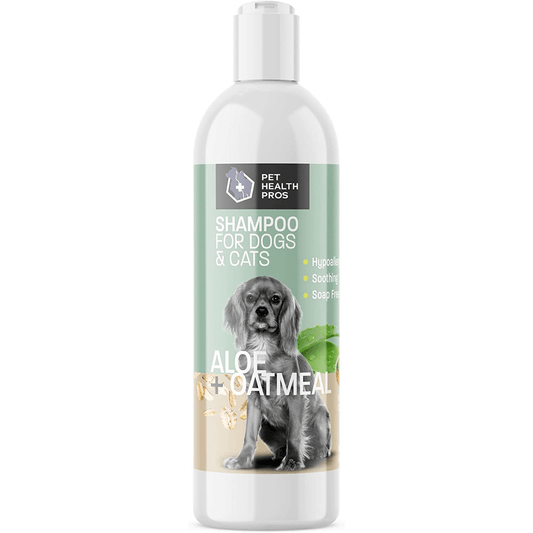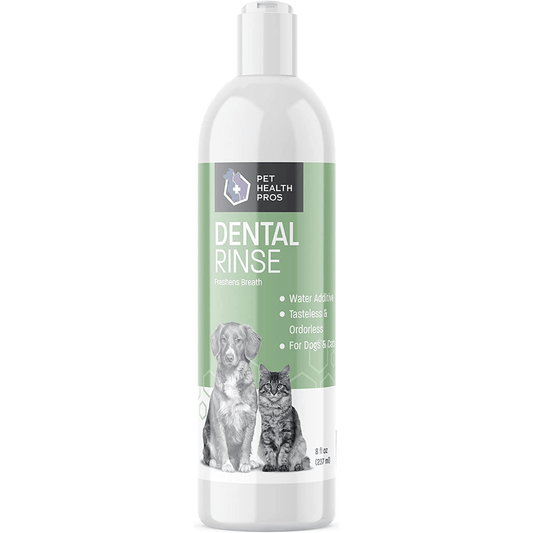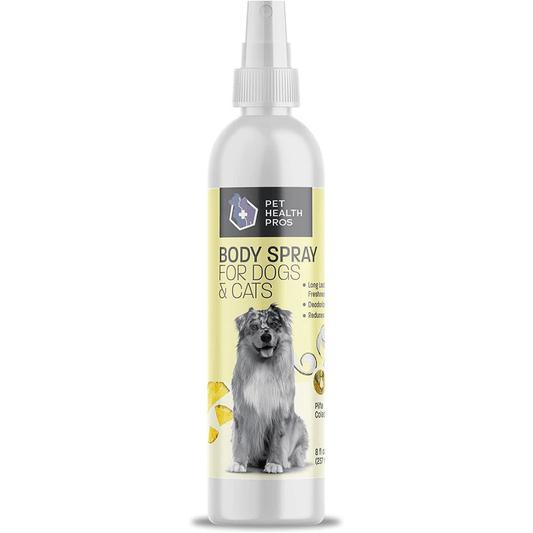If your dog is dealing with pain or inflammation, you might have heard about meloxicam for dogs. This medication is commonly used in veterinary medicine to help manage these issues. In this article, we will explore what meloxicam is, how it works, its benefits, proper dosage guidelines, potential side effects, and safety tips. By the end, you'll have a better understanding of whether meloxicam is the right choice for your furry friend.
Key Takeaways
- Meloxicam is a non-steroidal anti-inflammatory drug (NSAID) used to relieve pain and inflammation in dogs.
- It works by blocking certain enzymes that contribute to pain and swelling.
- Commonly prescribed for conditions like arthritis, meloxicam can significantly improve a dog's quality of life.
- Dosage should always be determined by a veterinarian based on the dog's weight and specific health needs.
- Monitoring for side effects is crucial, and any concerns should prompt a call to your vet.
Overview Of Meloxicam For Dogs
What Is Meloxicam?
Meloxicam is a non-steroidal anti-inflammatory drug (NSAID) often prescribed by veterinarians to manage pain and inflammation in dogs. It belongs to the oxicam class of NSAIDs, and it works by reducing the production of prostaglandins, which are substances in the body that contribute to inflammation and pain. Meloxicam is available in both injectable and oral forms, making it versatile for different treatment needs. It's important to note that while meloxicam can be very effective, it should only be used under the guidance of a vet to ensure proper dosage and monitoring.
How Does Meloxicam Work?
Meloxicam's mechanism of action centers around inhibiting cyclooxygenase (COX) enzymes. There are two main types: COX-1 and COX-2. COX-1 is involved in maintaining normal physiological functions, like protecting the stomach lining and ensuring proper kidney function. COX-2, on the other hand, is primarily responsible for producing prostaglandins at sites of inflammation. Meloxicam is considered a COX-2 selective inhibitor, meaning it targets COX-2 more than COX-1. This selectivity helps reduce inflammation and pain while minimizing the risk of side effects associated with COX-1 inhibition, such as gastrointestinal issues. However, it's not entirely COX-2 specific, so there's still a potential for some COX-1 related side effects.
Common Uses in Veterinary Medicine
Meloxicam is used for a variety of conditions in veterinary medicine, primarily to alleviate pain and inflammation. Here are some common uses:
- Osteoarthritis: It's frequently prescribed to manage the chronic pain and inflammation associated with arthritis, helping to improve a dog's mobility and quality of life. If your dog has arthritis symptoms, meloxicam might be a good option.
- Post-operative Pain: Vets often use meloxicam to control pain following surgical procedures, ensuring a more comfortable recovery for the animal.
- Musculoskeletal Pain: It can be used to treat pain related to muscle injuries, sprains, and strains.
- Other Inflammatory Conditions: Meloxicam may also be prescribed for other conditions involving inflammation, as determined by a veterinarian.
It's really important to remember that meloxicam isn't a one-size-fits-all solution. The decision to use it, as well as the dosage, should always be made by a vet who can assess the dog's specific condition and health status. This helps ensure the medication is both safe and effective.
Benefits Of Meloxicam For Dogs
Pain Relief
Meloxicam is often prescribed to alleviate pain in dogs, and it's pretty effective. It's especially useful for managing chronic pain associated with arthritis or post-operative discomfort. I've seen it make a real difference in dogs who were previously reluctant to move around. It's not a cure, but it can really improve their quality of life by reducing the pain they experience daily.
Anti-Inflammatory Properties
Beyond just pain relief, meloxicam works as an anti-inflammatory. This is super important because inflammation is often a big part of what causes pain in the first place. By reducing inflammation, meloxicam can help address the underlying issue, not just mask the symptoms. It's like hitting two birds with one stone – less pain and less inflammation.
Improved Mobility
Because meloxicam tackles both pain and inflammation, many dog owners notice a significant improvement in their dog's mobility. A dog that was once slow and hesitant might start moving more freely and engaging in activities they used to avoid. It's great to see them get back to enjoying walks and playtime. It's not a miracle drug, but it can certainly help them get around better.
It's important to remember that while meloxicam can provide significant benefits, it's not a long-term solution for every dog. Regular check-ups with your vet are important to monitor your dog's health and adjust treatment as needed. Every dog is different, and what works for one might not work for another.
Dosage Guidelines For Meloxicam
Determining the Right Dosage
Okay, so figuring out the right dose of meloxicam for your dog? It's super important to get this right. The dosage is usually based on your dog's weight, and it's measured in milligrams per kilogram (mg/kg).
- Always, always follow your vet's instructions. They know your dog's health history and can give you the best advice.
- Never try to adjust the dosage yourself without talking to your vet first.
- Keep in mind that different formulations of meloxicam might have different concentrations, so pay close attention to the label.
It's really important to understand that what works for one dog might not work for another. Factors like age, overall health, and other medications can all play a role in how your dog responds to meloxicam. So, don't compare dosages with other pet owners – stick to what your vet recommends.
Administration Methods
How you give meloxicam to your dog can also make a difference. Meloxicam typically comes in liquid or chewable tablet form. Here's the deal:
- Liquid: You can use a syringe to measure the exact dose and squirt it into your dog's mouth. Some dogs don't mind the taste, but others might be a bit picky. Try mixing it with a small amount of food if needed.
- Chewable Tablets: These are often flavored to make them more appealing. Just make sure your dog actually chews the tablet and doesn't just swallow it whole.
- With Food: Giving meloxicam with food can help prevent stomach upset. It's a good idea to give it with a meal, but check with your vet to see if they have any specific recommendations.
Adjusting Dosage for Specific Conditions
Sometimes, the dosage of meloxicam might need to be tweaked depending on your dog's specific condition or how they're responding to the medication. For example:
- If your dog has kidney or liver issues, your vet might prescribe a lower dose to avoid putting too much stress on those organs.
- If your dog is on other medications, there could be interactions that require a dosage adjustment. Always tell your vet about all the medications and supplements your dog is taking.
- If you notice any side effects, like vomiting or diarrhea, contact your vet right away. They might need to lower the dose or switch to a different medication.
Basically, it's all about working closely with your vet to find the right balance and keep your dog comfortable and safe.
Potential Side Effects Of Meloxicam
Like any medication, meloxicam can cause side effects in dogs. While many dogs tolerate it well, it's important to be aware of potential issues.
Common Side Effects
Some of the more common side effects are usually mild, but it's still good to keep an eye out. These can include:
- Loss of appetite. If your dog suddenly becomes a picky eater or refuses food, it could be a sign.
- Vomiting. Occasional vomiting might happen, but frequent episodes are a concern.
- Diarrhea. Similar to vomiting, a bit of loose stool isn't always alarming, but persistent diarrhea needs attention.
- Increased thirst or urination. This could indicate kidney issues, so it's worth noting.
- Lethargy. A normally energetic dog might seem unusually tired or sluggish.
Serious Reactions to Watch For
While less common, some serious reactions require immediate veterinary attention. These can be life-threatening if left untreated.
- Black, tarry stools. This indicates digested blood in the stool, which is a sign of gastrointestinal bleeding.
- Pale gums. Pale gums can signal anemia, possibly due to internal bleeding.
- Jaundice (yellowing of the skin, gums, or eyes). This suggests liver problems.
- Seizures. Any seizure activity is an emergency.
- Severe skin reactions. Hives, swelling, or intense itching could indicate an allergic reaction.
When to Contact Your Veterinarian
It's always better to be safe than sorry. If you notice any of the following, contact your vet right away:
- Any serious side effects listed above.
- Mild side effects that persist or worsen.
- Any new or unusual symptoms that develop while your dog is taking meloxicam.
Remember, you know your dog best. If something seems off, trust your instincts and seek professional advice. Early intervention can make a big difference in managing potential side effects.
Safety Tips When Using Meloxicam
Consulting Your Veterinarian
Before you even think about giving your dog meloxicam, chat with your vet. Seriously, it's not optional. Your vet needs to give the green light. They'll look at your dog's health history, any other meds they're on, and make sure meloxicam is actually a good idea. Don't try to play doctor yourself; it could end badly.
Monitoring Your Dog's Health
Keep a close eye on your dog while they're taking meloxicam. I mean, really watch them. Look for changes in their behavior, appetite, or bathroom habits. If you notice anything weird, don't wait—call your vet.
Here's a quick checklist:
- Are they eating normally?
- Are they drinking more or less water than usual?
- Are their stools normal?
- Are they acting like themselves?
Avoiding Drug Interactions
Meloxicam can play badly with other drugs. It's like that one guest at a party who can't handle their drinks and starts drama. Make sure your vet knows about every single medication or supplement your dog is taking. This includes flea and tick treatments, heartworm preventatives, and even those "natural" remedies you got from the health food store. Some combinations can cause serious problems, like kidney damage or bleeding issues.
It's super important to be upfront with your vet about everything your dog is getting. Even seemingly harmless over-the-counter stuff can cause issues when mixed with meloxicam. Better safe than sorry, right?
Alternatives To Meloxicam
Other Pain Relief Options
When meloxicam isn't the right fit for your dog, whether due to side effects or other health concerns, it's good to know there are other options. Non-steroidal anti-inflammatory drugs (NSAIDs) like carprofen (Rimadyl) and firocoxib (Previcox) work similarly to meloxicam but might be better tolerated by some dogs. Then there are drugs like tramadol and gabapentin, which are different classes of pain relievers that can be used alone or with NSAIDs to manage pain, especially chronic pain.
Natural Remedies
For milder cases of pain or as a supplement to conventional treatments, some pet owners explore natural remedies. Things like fish oil, which is rich in omega-3 fatty acids, can help reduce inflammation. Glucosamine and chondroitin are also popular for supporting joint health. Turmeric, with its active compound curcumin, is another option often talked about for its anti-inflammatory properties. Just remember, it's important to talk to your vet before starting any natural remedy, as they can still have side effects or interact with other medications.
When to Consider Alternatives
There are definitely times when looking at alternatives to meloxicam is a must. If your dog experiences any adverse reactions to meloxicam, like vomiting, diarrhea, loss of appetite, or lethargy, it's time to stop the medication and consult your vet immediately. Also, if your dog has pre-existing kidney or liver issues, or if they're taking other medications that could interact with meloxicam, alternatives should be considered. The goal is always to find the safest and most effective way to manage your dog's pain and improve their quality of life.
It's important to remember that every dog is different, and what works well for one might not work for another. Always work closely with your veterinarian to determine the best course of treatment for your furry friend.
Conclusion On Meloxicam Use In Dogs
Summary of Key Points
Meloxicam can be a helpful medication for managing pain and inflammation in dogs, but it's not without risks. We've covered a lot, from what meloxicam is and how it works, to proper dosages, potential side effects, and safety measures. Remember, every dog is different, and what works well for one might not be suitable for another. Individual responses to meloxicam can vary quite a bit.
Final Recommendations
When it comes to your dog's health, it's always best to err on the side of caution. Here are a few things to keep in mind:
- Always follow your vet's instructions carefully.
- Monitor your dog closely for any signs of side effects.
- Consider all available options, including alternatives to meloxicam.
It's important to remember that meloxicam is a tool, not a cure. It can help manage symptoms and improve your dog's quality of life, but it's not a substitute for addressing the underlying cause of their pain or inflammation.
Importance of Veterinary Guidance
The most important takeaway is that you should always consult with your veterinarian before starting your dog on meloxicam. They can assess your dog's individual needs, determine the appropriate dosage, and monitor them for any potential problems. Don't try to self-diagnose or treat your dog – it's just not worth the risk. Your vet is your best resource for keeping your furry friend happy and healthy.
In summary, meloxicam can be a helpful medication for dogs dealing with pain and inflammation. However, it’s important to use it carefully and under a vet's guidance. If you have more questions about meloxicam or want to learn more about keeping your dog healthy, visit our website for more information!
Final Thoughts on Meloxicam for Dogs
In summary, meloxicam can be a helpful medication for dogs dealing with pain and inflammation. It's important to follow your vet's advice on dosage and monitor your dog for any side effects. Always keep an eye on how your dog reacts after taking it. If you notice anything unusual, don’t hesitate to reach out to your vet. Remember, while meloxicam can provide relief, it’s not suitable for every dog. So, make sure to have a good chat with your vet about whether it's the right choice for your furry friend.
Frequently Asked Questions
What is Meloxicam used for in dogs?
Meloxicam is a medication that helps relieve pain and reduce inflammation in dogs, especially for conditions like arthritis.
How is Meloxicam given to dogs?
Meloxicam can be given to dogs as a tablet, liquid, or injection, depending on the veterinarian's recommendation.
What should I do if my dog misses a dose of Meloxicam?
If your dog misses a dose, give it as soon as you remember. If it's almost time for the next dose, skip the missed one and continue with the regular schedule.
Are there any side effects of Meloxicam in dogs?
Yes, some dogs may experience side effects like upset stomach, vomiting, or diarrhea. It's important to monitor your dog after giving the medication.
Can Meloxicam be given with other medications?
You should always consult your veterinarian before giving Meloxicam with other medications, as there can be interactions.
How long can my dog take Meloxicam safely?
The duration of Meloxicam treatment should be determined by your veterinarian, as it can vary based on your dog's condition and response to the medication.








